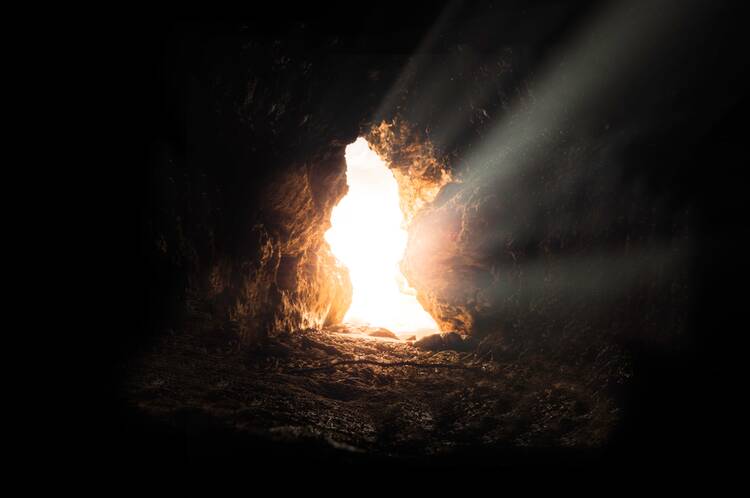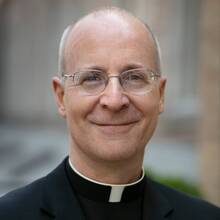Journey with America’s editors as they reflect on Scripture, prayer, fasting and almsgiving both in written form and on “The Word” podcast. Find all the reflections and more Lent resources here.
Subscribe to The Word in Apple Podcasts, Spotify, Google Podcasts or your favorite podcast player and never miss a reflection.
A reading from the Gospel of John
On the first day of the week,
Mary of Magdala came to the tomb early in the morning,
while it was still dark,
and saw the stone removed from the tomb.
So she ran and went to Simon Peter
and to the other disciple whom Jesus loved, and told them,
“They have taken the Lord from the tomb,
and we don’t know where they put him.”
So Peter and the other disciple went out and came to the tomb.
They both ran, but the other disciple ran faster than Peter
and arrived at the tomb first;
he bent down and saw the burial cloths there, but did not go in.
When Simon Peter arrived after him,
he went into the tomb and saw the burial cloths there,
and the cloth that had covered his head,
not with the burial cloths but rolled up in a separate place.
Then the other disciple also went in,
the one who had arrived at the tomb first,
and he saw and believed.
For they did not yet understand the Scripture
that he had to rise from the dead.
Reflection
I don’t think I’ve ever wanted spring to come as much as I have in the last few weeks. Thanks to the pandemic, this has felt like the longest fall and winter in history. On the rooftop of my Jesuit community in New York City is a little garden. Last fall I planted all sorts of bulbs: daffodils, hyacinths, crocuses in little plastic pots, and they are just now starting to bloom. I feel an almost physical release looking at them.
And I long for Easter even more, because it has also felt like the longest Lent in history. The pandemic began in Lent last year and, as a result, it has felt like the entire past 12 months has been one big Lent. This Ash Wednesday, when people asked me what to give up I was tempted to say, “Nothing: you’ve probably given up more than you ever thought possible last year.” There has been for the last year, among many people, feelings of rootlessness, hopelessness and even despair. Fear too. Sadness. It is similar to what the disciples felt on Good Friday and Holy Saturday. The Easter Vigil leads us into these feelings.
Yet we know that this is never the last word. Fall and winter always give way to spring and summer, as those of us in the northern hemisphere are now experiencing. And suffering is never the end, in the Christian worldview and, more importantly, the Christian experience.
So what is the message of this strange spring, this long-awaited Easter? It’s a message that’s both old and new: Love is stronger than hate. Hope is stronger than despair. Life is stronger than death. And nothing is impossible with God.
More from America:








